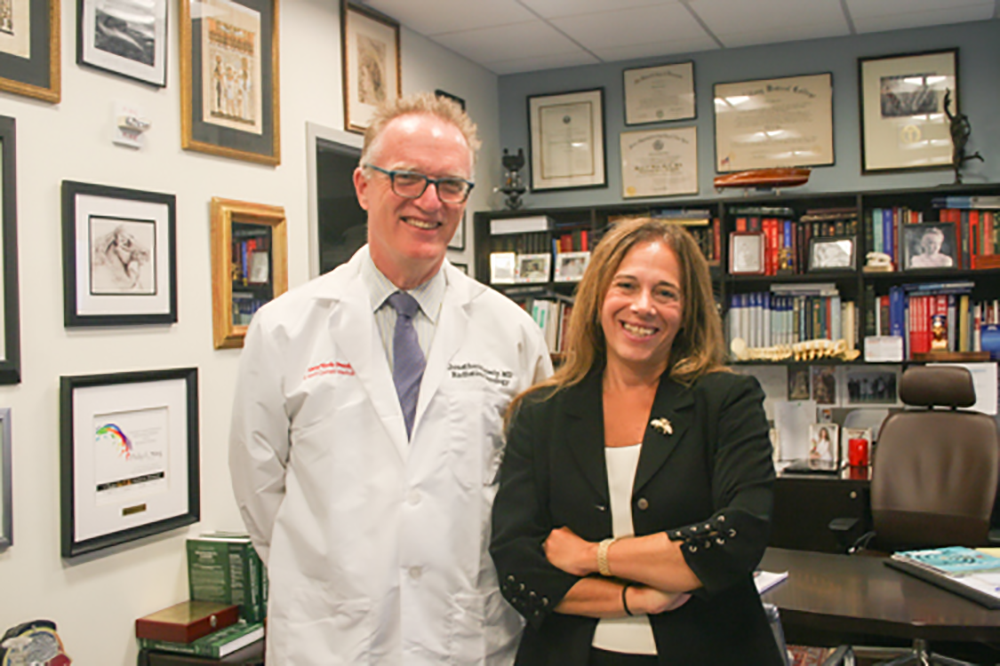
The Stereotactic Radiosurgery Program at Weill Cornell Medicine Neurological Surgery offers the latest in advanced minimally invasive and non-invasive treatments for a wide range of conditions.
Stereotactic radiosurgery (SRS) is used for precise delivery of highly focused radiation that can pinpoint a tumor or other target with little or no effect on normal surrounding tissue. It has been used with great success in the treatment of brain tumors and other conditions as an alternative to “open” surgery. You may have heard of the Linear Accelerator (LINAC), Gamma Knife, or CyberKnife — these are some of the machines used in stereotactic radiosurgery.
NEWS: New Gamma Knife Center Opens at Weill Cornell Medicine
The term “stereotactic radiosurgery” refers to the combination of advanced radiation tools and complex three-dimensional (“stereotactic”) surgical planning techniques. It is not surgery in the conventional sense — it does not involve scalpels or other invasive tools, and does not require any openings in the skull or spine.
Stereotactic radiosurgery may be used either alone or in combination with other treatments, including traditional surgery, chemotherapy and other medications, “conventional” radiation, and embolization. Procedures done on the brain and spine are performed by a multidisciplinary team that includes a neurosurgeon, a radiation oncologist, and a medical physicist, all of whom have undergone special training and certification in stereotactic radiosurgery. The procedures are done on an outpatient basis, usually done under local or no anesthesia. The patient is awake for this painless treatment, and in most cases may return to their usual activities that same day or on the day after treatment.
Stereotactic radiosurgery begins with a treatment plan, which is created using high-resolution MRI and/or CT scans that identify the best pathway for the radiation. In some cases, PET scans may be used to further refine targeting. Once the precise pathway is determined, the radiation is delivered.
To ensure accuracy, patients are immobilized during imaging and treatment. Depending on the machine used, a patient may wear a head frame, plastic face mask, custom mouthpiece, or other special devices that help keep the target area perfectly still.
Stereotactic radiosurgery to the brain and spine has traditionally been performed in a single session. Newer techniques, however, permit dividing treatments into multiple lower-dose treatments (generally three to five), an approach called fractionated stereotactic radiotherapy (FSRT). Your surgeon will determine if single-session or fractionated treatment would be most beneficial for you.
Use our online form to request an appointment, or call the office of program director Susan Pannullo, M.D., at 212-746-2438. Most requests for appointments can be met within 48 hours.